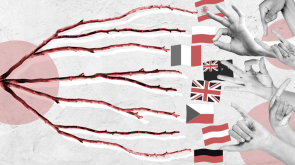
How does our brain react when we explore something new?
In an ever-changing world, making good decisions requires the ability to explore different strategies and to identify which one will be the most suitable. New research carried out by a team of neuroscientists from Inserm and CNRS at the Ecole normale supérieure - PSL, in collaboration with Harvard University, characterised this cognitive process by recording the tiny magnetic fields emitted by the human brain. The results of this study indicate that exploring a new strategy is accompanied by a sustained increase in arousal, which affects central and peripheral nervous systems. This work has just been published in the journal eLife.

requires you to explore your environment in search of relevant information. © Adobe Stock
Indeed, we begin to explore our environment when our usual strategies no longer work as well as they used to - either because we have become bored with our usual restaurant or because the weather for the weekend has changed. But exploration also coincides with a change in behaviour. It is therefore difficult to determine whether the markers of exploration described in previous studies are really specific to exploration itself, or whether they are characteristic of other processes related to behavioural change that occur at the same time.
To address this problem, researchers have developed a new experimental protocol that allows for the first time isolating exploration from other cognitive processes. How? By comparing two conditions that were identical in every respect, except for the possibility of exploring one's environment: the first condition allowed free exploration, while the second condition only allowed observation of the same environment - without the possibility of exploration this time.
The team, led by Valentin Wyart, Inserm research director at the LNC2, and Valérian Chambon, CNRS research director at the IJN, tested this new experimental protocol on a group of volunteers whose cerebral magnetic activity was recorded using magnetoencephalography (MEG).
Description of the protocol
In this protocol, the two conditions took the form of card games, of perfectly identical difficulty from a statistical point of view. In both conditions, packs of coloured cards were placed in front of the volunteers. Each pack contained cards of different colours, in different proportions.
In the first condition (exploration), the volunteers had to draw cards themselves from the available packs, with the possibility of changing packs for each new card, and were instructed to draw a maximum number of cards of a "target" colour.
In the second (observation) condition, the same volunteers did not have the opportunity to explore the available packs themselves, since the cards were drawn by the experimenter, without being able to identify the pack from which they had been drawn. They were instructed to guess it.
"Agentivity, i.e. the ability to explore one's environment and, more generally, to modify it, is an essential dimension but one that is unfortunately largely ignored by decision theories," explains Valérian Chambon. "By manipulating the agentivity of the volunteers tested using our protocol, we have shown that exploration is associated with a particularly high level of perceived uncertainty, as well as a willingness to try new strategies even if they do not initially work very well", continues Marion Rouault, the first author of the article and recently recruited as a CNRS research fellow at the École normale supérieure - PSL.
Magnetoencephalography (MEG) recordings, whose sub-second temporal resolution is much better than that of magnetic resonance imaging (MRI), have shown that exploration is preceded by a particularly marked suppression of brain waves in the alpha band, a well-known effect of attention. And that's not all. "By measuring the pupillary dilation of the volunteers tested as well as their cardiac activity, we also observed that exploration is associated with a prolonged pupillary response over time, as well as a delay in the heartbeat when exploration is triggered," adds Marion Rouault. These results indicate that exploration is accompanied by a sustained increase in attention that is manifested in the peripheral nervous system.
This experimental protocol also opens up new avenues for studying certain psychiatric conditions. "Obsessive-compulsive disorder is characterised by behavioural symptoms in uncertain conditions, but the origin of these symptoms is still poorly understood," explains Valentin Wyart. "Our experimental protocol could explain some of these symptoms by a specific deficit in exploration, and not by a general deficit in decision-making as is often the case," he concludes.
[1] A "behavioural marker" is a behaviour characteristic of a cognitive process. For example, in this study, a sudden drop in confidence at the time of a change in behaviour is a behavioural marker of exploration.
Bibliography
Marion Rouault, Aurélien Weiss, Junseok K Lee, Jan Drugowitsch, Valerian Chambon, Valentin Wyart (2022). Controllability boosts neural and cognitive signatures of changes-of-mind in uncertain environments. eLife. 11:e75038. doi:10.7554/eLife.75038



